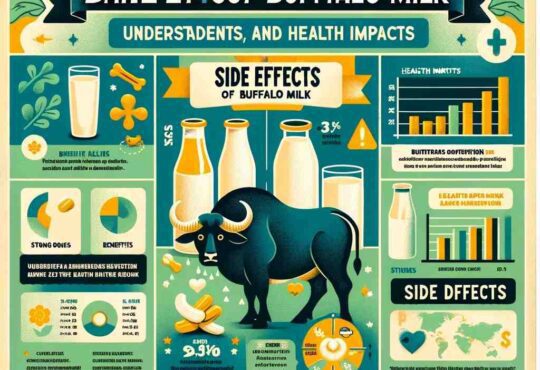Monkeypox is a viral disease that was first discovered in 1958 when outbreaks occurred in monkeys kept for research purposes. Similar to smallpox and other poxviruses, Monkey pox shares several characteristics, but it also exhibits notable differences that distinguish it from its viral counterparts.
Introduction
Monkey pox is a viral disease that was first discovered in 1958 when outbreaks occurred in monkeys kept for research purposes. Similar to smallpox and other poxviruses, Monkey pox shares several characteristics, but it also exhibits notable differences that distinguish it from its viral counterparts.
Understanding Monkeypox Transmission
Monkey pox primarily originates from zoonotic sources, with rodents believed to serve as the natural hosts. The virus can be transmitted through direct contact with infected animals or through the consumption of their meat. In terms of human-to-human transmission, both primary transmission (direct contact with fluids or materials from infected individuals) and secondary transmission (contact with lesions or respiratory droplets) can occur. This poses a particular risk in areas with high population density and inadequate healthcare infrastructure.


Symptoms and Clinical Presentation
Early signs of Monkey pox may include fever, headache, muscle aches, and fatigue, which can be mistaken for a common cold or flu. As the disease progresses, the development of a distinctive rash becomes evident, which progresses through a series of stages, including the formation of pustules and subsequent scabs. It is important to note that different strains of Monkey pox may present variations in symptomatology, with some strains causing more severe manifestations than others.
Diagnosing Monkey pox
Accurate diagnosis of Monkey pox relies on specific laboratory tests, such as polymerase chain reaction (PCR) and viral culture techniques. These tests not only identify the presence of Monkey pox virus but also differentiate it from other similar diseases, such as chickenpox and herpes viruses. However, challenges and limitations in accessing proper diagnostic tools, especially in resource-limited settings, may hinder the timely and accurate detection of Monkey pox cases.
Monkey pox Treatments and Prevention Strategies
Currently, there are no specific antiviral therapies approved specifically for Monkey pox treatment. However, certain antiviral drugs have shown promise in reducing the severity and duration of symptoms in some cases. Vaccination remains a vital preventive measure against Monkey pox, primarily through the use of the smallpox vaccine. Ongoing research and clinical trials aim to develop more effective treatment options and preventive strategies to combat this emerging epidemic.


Outbreaks and Global Spread
Over the years, significant Monkey pox outbreaks have occurred, particularly in Central and West African countries. However, a recent surge in Monkey pox cases has been observed worldwide, including in regions where the disease was previously uncommon. Factors contributing to the global spread of Monkey pox include increased international travel, encroachment into wildlife habitats, and the expansion of global trade networks.
Monkey pox and Public Health Response
Surveillance and reporting systems play a crucial role in monitoring the prevalence and spread of Monkey pox. Current strategies involve enhancing disease surveillance networks, promoting early detection, and implementing effective contact tracing measures. However, the preparedness of healthcare systems, particularly in resource-limited regions, remains a challenge. International collaborations and control measures are essential to strengthen global response efforts and ensure effective prevention and containment of Monkey pox outbreaks.
Monkey pox and Animal Reservoirs
Identifying potential animal hosts for Monkey pox is critical in understanding the disease’s transmission dynamics. While rodents are considered the primary reservoirs, other wildlife species and domestic animals may also play a role in the spread of the virus. Mitigating the risk of transmission from animal reservoirs requires a comprehensive approach, including robust surveillance programs, responsible wildlife management, and public awareness campaigns to minimize human-animal interaction.


Socioeconomic Impacts of Monkey pox
Monkey pox outbreaks have far-reaching consequences, extending beyond the realm of public health. Affected communities and individuals often face social stigmas and discrimination, which can significantly impact mental health and well-being. Additionally, the economic burden of Monkey pox outbreaks, including healthcare costs, loss of productivity, and disruption of local economies, can be substantial. Addressing these socioeconomic impacts is crucial for comprehensive management and control of Monkey pox.
Monkeypox and Future Epidemic Preparedness
The emergence of Monkey pox serves as a reminder of the importance of preparedness for public health emergencies. Lessons learned from previous outbreaks, such as the COVID-19 pandemic, underscore the need for robust surveillance systems, rapid detection capabilities, and efficient containment strategies. Building resilience in healthcare systems, strengthening research capacities, and fostering international collaborations are paramount in enhancing our ability to respond effectively to future Monkey pox outbreaks.
Summary and Conclusion
Monkeypox, an emerging viral disease with similarities to smallpox, presents unique challenges in terms of its transmission and clinical presentation. Accurate diagnosis, treatment options, and prevention strategies remain critical areas of focus. Timely surveillance, public health response, and addressing the socioeconomic impacts of Monkeypox outbreaks are vital for protecting vulnerable populations and mitigating the global spread of this emerging epidemic.


FAQs on Monkeypox
A. How is Monkeypox different from other poxviruses?
Monkeypox exhibits similarities to smallpox but also displays distinct differences in terms of symptom presentation, severity, and transmissibility.
B. Is there a cure for Monkeypox?
Currently, there is no specific cure for Monkeypox. However, certain antiviral therapies have shown promise in managing the symptoms and reducing the severity of the disease.
C. Can you get Monkeypox more than once?
Reinfection with Monkeypox is rare but possible. However, having a prior infection generally confers immunity against future episodes of the disease.
D. Are there any preventive measures for Monkeypox?
Vaccination, particularly with the smallpox vaccine, remains a primary preventive measure against Monkeypox. Additionally, adopting hygienic practices and avoiding direct contact with infected animals can help reduce the risk of transmission.
E. Should I be concerned about a Monkeypox outbreak in my area?
The risk for Monkeypox outbreaks varies depending on geographical location and other factors. Staying informed about local disease surveillance and public health advisories can help individuals make informed decisions and take necessary precautions if an outbreak occurs.






